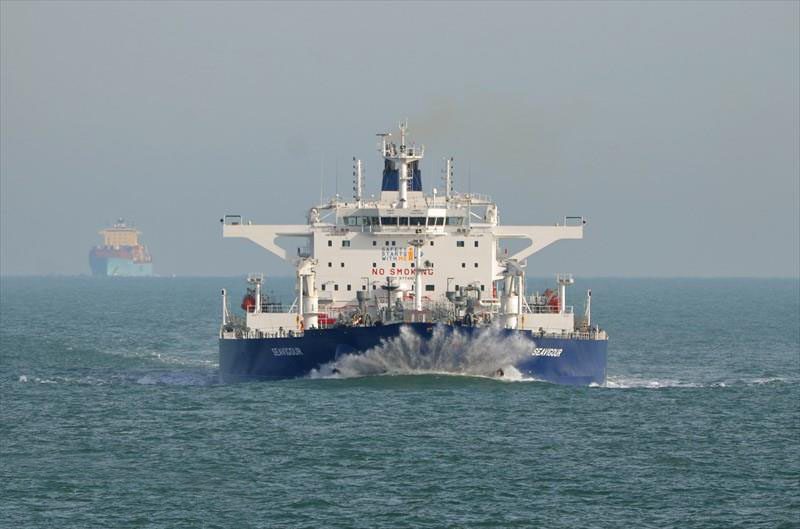(S&P Global Platts) India’s sharp revival in gasoline appetite to surpass even pre-pandemic levels has prompted its refiners to increasingly queue up to import lighter crudes in recent months, but the fourth quarter could see a tilt in the balance in favor of heavier grades as gasoil demand growth is expected to pick up speed.
Traditionally, Indian refineries were geared toward maximizing middle distillates production by using mostly heaver Middle Eastern crudes, with diesel being the preferred fuel for industries and commercial transport and accounting for roughly about 38% of India’s overall oil products basket. However, diesel sales have been largely stagnant in recent months, while gasoline usage has been increasing.
“India’s demand for lighter products was doing better than middle distillates, so it has made sense to source light sweet crude from the US, Africa and Europe, especially as arbitrage economics were viable,” said Lim Jit Yang, adviser for oil markets at S&P Global Platts Analytics.
Guyana, India and oil in the Southern Caribbean
India ‘s gasoline consumption has increased steadily after hitting a 12-month low in May, spurred by lower COVID-19 infections and rising vaccination rates.
Gasoline consumption rose by a robust 6% year on year to 2.6 million mt in September, from 2.45 million mt a year earlier, although it was lower than the five-month high of 2.691 million mt in August, data from the country’s Petroleum Planning and Analysis Cell showed.
Over January-September, gasoline demand rose by more than 14% year on year to 22.53 million mt, from 19.74 million mt in the same year-ago period.
“Increased gasoline usage is also a factor of Indians buying more cars and increasingly using personal vehicles to commute, as they embark on ‘revenge travel’ and flock to tourist destinations after months of restrictions,” said Rajat Kapoor, managing director for oil and gas at AWR Lloyd.
Tweaking the crude slate
The gradual rebound in domestic mobility comes despite some concerns that the country could experience another wave of the coronavirus, although infection rates have not been either severe or widespread enough to derail the overall economic recovery, analysts told S&P Global Platts.
Lighter grade crudes, such as US West Texas Intermediate, Nigeria’s Akpo and Kazakhstan’s CPC Blend have been in demand among Indian refiners as they have tried to maximize production of in-demand gasoline, which has come at the cost of reduction in purchases of some heavier Middle Eastern crudes, analysts said.
From Liza to Tupi, Indian refiners embrace newer crudes
Kang Wu, head of global oil demand and Asia analytics at Platts, said India’s mobility index continued to improve from 172% in September to over 200% at the start of October with the easing of pandemic movement restriction measures.
“Indian refiners are looking to adjust their crude oil import mix in favor of sweeter and lighter grades that can be refined to maximize production of light distillates, to feed increased production of gasoline needed to meet the recent surge in demand for the fuel,” Kapoor added.
The FOB Singapore 92 RON gasoline crack against front-month ICE Brent crude futures — the most liquid Asian gasoline benchmark — has averaged $9.92/b month to date as of Oct. 15, up sharply from $7.26/b over September, Platts data showed.
“India wants to switch its crude slate basket and diversify. They have asked OPEC to increase production and failed. In addition, it is a better gasoline market compared with diesel,” a trader with a Southeast Asian refinery said.
Indian Oil Company offered best deal for Liza crude – Bharrat
India’s demand for gasoline has continued to rise as pandemic-induced lockdowns dented usage of public transport and led to a sharp rise in private vehicle usage, the trader added.
“Gasoline demand is going up. Post the pandemic’s first wave and then the second wave, things are favoring more toward gasoline than gasoil,” a second trader with a South Asian refinery said.
Gasoil recovery to pick up
Analysts said things could start to look brighter for gasoil in coming months.
Lim of Platts Analytics added that going forward, India’s overall oil demand was expected to pick up after the monsoon season, with the upcoming festive season and an improving economy expected to provide support to consumption and push up Q4 demand growth by 575,000 b/d quarter on quarter to 5.3 million b/d.
“Half of the sequential demand increase will come from middle distillates while lighter products will only contribute 17%. As such, it may be more desirable for refiners to get more Middle Eastern medium to heavy crude in Q4,” he said.
The physical FOB Singapore 10 ppm sulfur gasoil crack against front-month cash Dubai has averaged $14.02/b for the month to date, Platts data showed Oct. 15, up from $10.31/b in September and $7.03/b in August.
India ‘s oil demand for full year 2021 is forecast to grow by 295,000 b/d to 4.9 million b/d, which would be still well below 2019 demand levels. India is expected to reach the pre-pandemic level of oil demand only in 2022, according to Platts Analytics.



